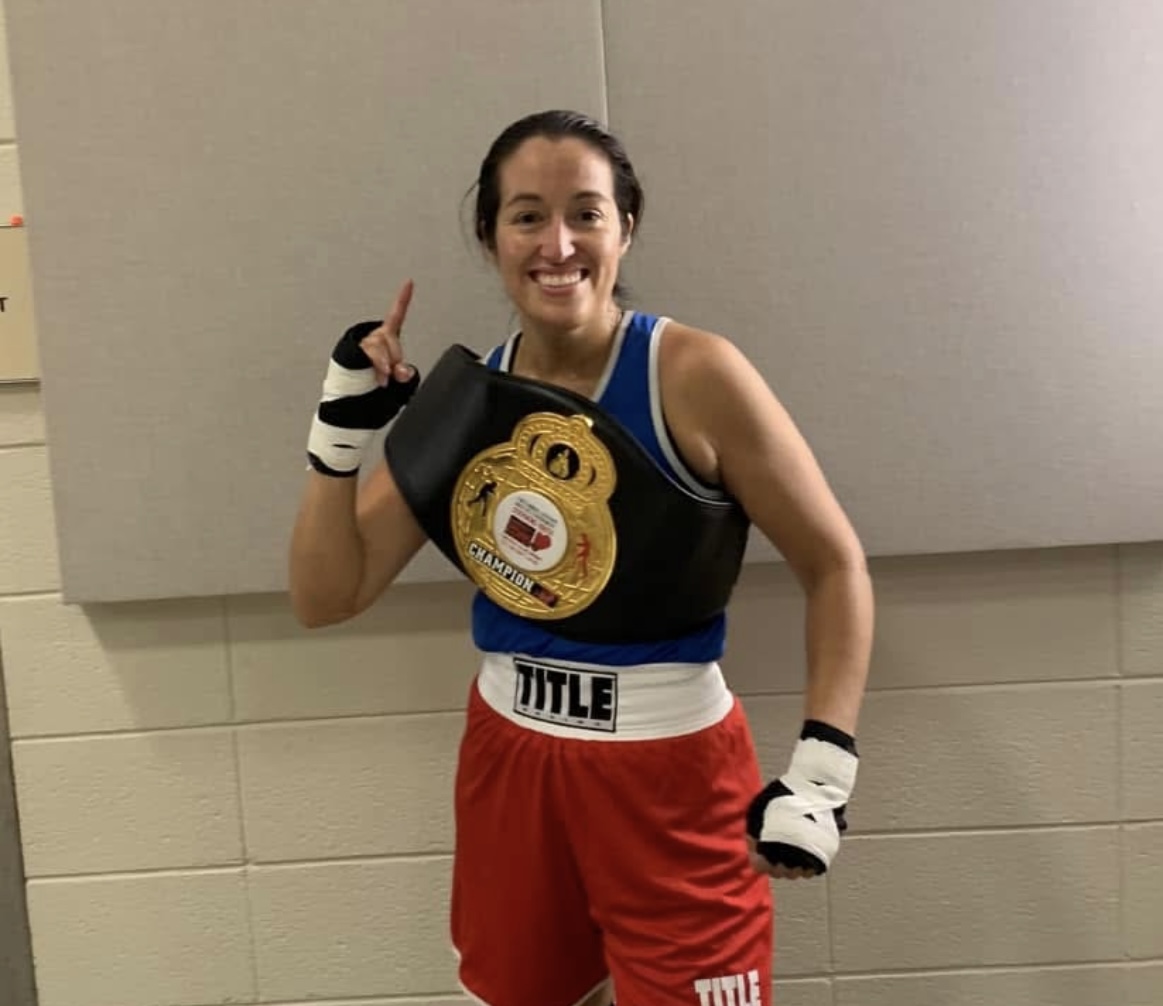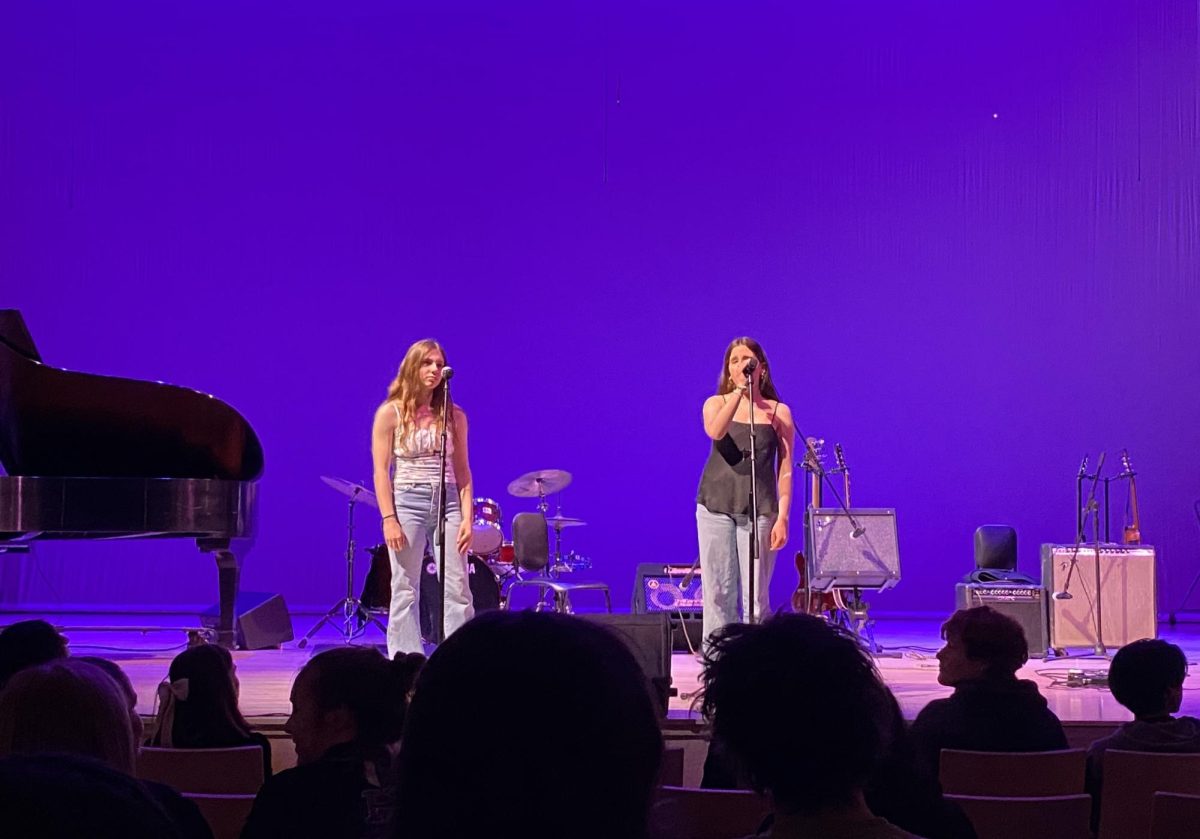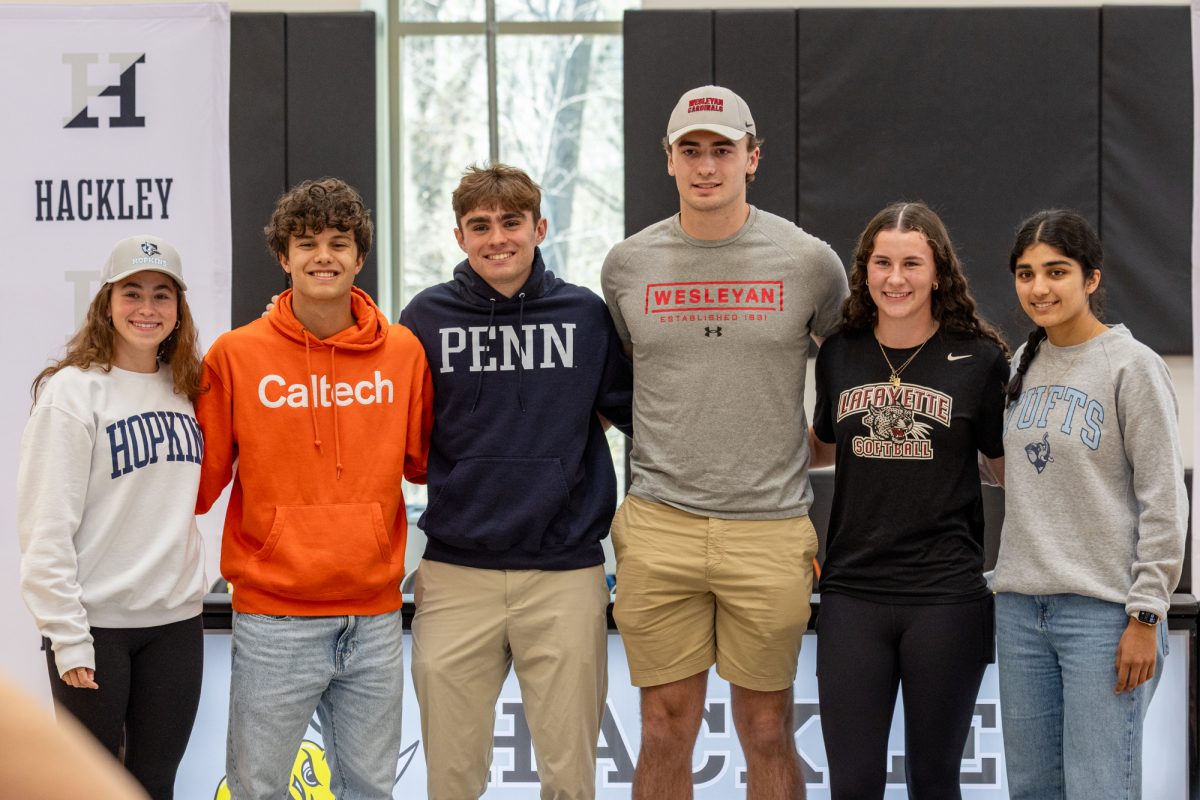Have you ever dreamed of going to Rome, and exploring all of its history? Do you want to make it big in Hollywood? What about taking a deep dive into the science behind your brain? If so, one of the three new minor courses might be perfect for you.
Rome And the Idea of Citizenship
You’ve likely come across a painting, story, or other depiction of Ancient Rome at one point or another. But have you ever wondered who the face is behind these paintings and stories? What lies at the site of the painting now, or even how this history affects us today? If any of those questions interest you, you might want to consider the elective “Rome and the Idea of Citizenship.”
While English teacher Doctor Richard Robinson, Classics teacher and department chair Christopher Sheppard, and history teacher Erica Jablon were on a Casten trip to Italy, they were met with a new idea for an elective course. During this trip, Dr. Robinson, Mr. Sheppard and Ms. Jablon wanted to examine how classical antiquity impacted Western civilization. They found that the trip only covered a small portion of what they wanted, and so the idea for “Rome and the Idea of Citizenship” came to be.
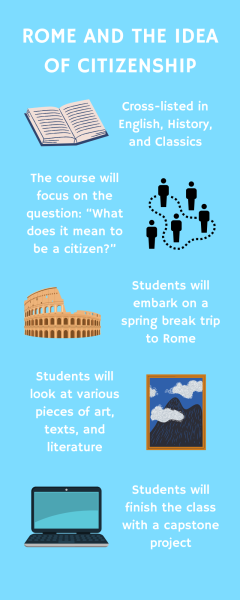
“Rome and the Idea of Citizenship” is an interdisciplinary course that is a collaboration involving faculty members in the English, history, and classics departments. Students will seek to answer the question of what it means to be a citizen in both ancient times and today. Students will also discuss the rights and responsibilities that come with being a citizen.
Dr. Robinson, Mr. Sheppard, and Ms. Jablon constructed the course around several important themes relating to citizenship, such as freedom and enslavement, immigration, exile and exclusion, law, justice, and imprisonment, the separation of church and state, and the relationship between race, gender, and ethnicity. Texts and art will be paired around these themes, giving students a chance to explore them.
“One of the things that struck us was that people tend to look at art as neutral, and yet, more often than not, art is heavily freighted with values. There are moral lessons and political lessons built-in. Recognizing that content and recognizing how works of art shape ideas of nationhood is really key,” said Dr. Robinson.
Dr. Robinson, Mr. Sheppard, and Ms. Jablon will lead a trip to Rome during spring break, where students can see the origin of the texts and art they have studied all year. Students will create a final project at the end of the course, such as an original essay, video, or slideshow. Dr. Robinson, Mr. Sheppard, and Ms. Jablon also hope to have students’ presentations available for viewing on a website for those who did not take the course.
During their time in class, students will look at foundational principles that went into the creation of the United States, as well as other countries in the world.
“We’re talking about a transition from a world of subjects to a world of citizens. From a world of people who were subject to a monarch or a tyrant or a dictator, to a world of citizens who shaped a nation in response to what they needed and wanted and felt was appropriate,” said Dr. Robinson.
While the course is named for and centered on Rome, it is not the only city students will explore. They will also look at Venice in contrast to Rome, especially when looking at how the growth of modern economies influenced the way people thought about their roles as citizens. Students will examine what it means to be a nation that is cosmopolitan and diverse, and what this meant for Rome and Venice, as well as other cities such as New York, Paris, and London.
While this course will cover many different aspects of citizenship, it also has a special importance on the Hilltop, as it aligns with some of the school’s core values.
“The topic of citizenship and the central questions of this course align closely with our core values at Hackley. Not only will we learn about citizenship in literature, history, and art, but also we will strive to put good citizenship into practice around the Harkness table, within Hackley, and when we travel,” said Mr. Sheppard.
The class will be very discussion-based without any lectures. Students can expect to come into class and look at different texts and art, and select which they want to be the focus of their discussion. Students may expect to do some written reflections as well.
“We envision this as an ideal course for students who are passionate about the humanities, who are really interested in making connections between art, literature, and history, and who might want to go to the places where these texts and artworks were created, and connect them together,” said Mr. Sheppard.
Intro to Screenwriting
Have you ever dreamed of writing for a movie, or TV show, or even of writing your own short film? Would you like to practice writing creatively in a way you might not be able to in a typical English class? Intro to Screenwriting might be a course for you!
The English elective that will meet three times a cycle and is open to all students is taught by Ashlin Halfnight, a middle school English teacher. In a given cycle, Mr. Halfnight wants to make sure the class covers three different categories: instruction, exercise, and projects. 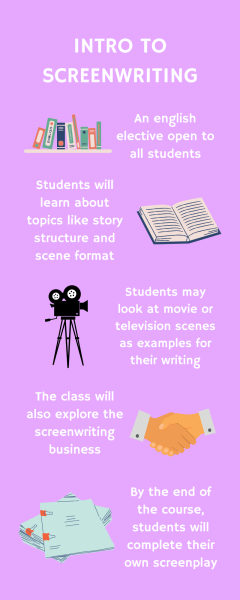
The instruction part of the class will teach students about how to write scenes, focusing on aspects ranging from how to format a screenplay to how to structure a script. Students may examine movie or television scenes as examples for their own screenplays. The exercise portion of the class will allow students to begin exploring their own writing. This will allow students to develop work on many different screenwriting concepts including dialogue, action, and specific tools like dramatic irony. The final part of the class will be a project, where students will have the opportunity to create their own screenplay, television episode, or short film.
Mr. Halfnight is excited to teach this course, as he loves writing and exploring writing with others. He will also be hearing from a new category of students, as he is a current Middle School teacher.
“Getting to know some of the voices and some of the passions of those students and exploring what they’re interested in writing about, I think, is something that I’m really looking forward to,” said Mr. Halfnight.
Before coming to teach at Hackley a year and a half ago, Mr. Halfnight was involved in the screenwriting business. He started as a playwright, and when one of his plays was optioned for a film, became involved in screenwriting. He has worked both in indie filmmaking, as well as in television production and writing, working on shows on Netflix, FX, Apple TV, and Discovery. While he is most experienced in adult drama, he also loves sci-fi, fantasy, and many other genres of TV. Some of the shows he has worked on include Bloodline, a Netflix thriller/drama, and The New Look, an Apple TV historical drama. He is most proud of Astraea, an indie film that he wrote and co-produced.
While students will learn about story structure, they will also learn about the insides of the screenwriting business, which is especially relevant for students who want to pursue a career in film and television. Mr. Halfnight believes it is valuable for students to have their own screenplay that they can present if they are seeking out an internship, or want to write another screenplay in the future.
Mr. Halfnight also wants to foster a supportive community of students. While he will give students feedback, it is also important to him that students give each other feedback, so each student hears from various perspectives.
“You become a better writer by reading other people’s writing and thinking about why it’s working or not working,” said Mr. Halfnight. Reading other people’s plays was an integral part of Mr. Halfnight’s development as a writer, especially when he worked for the Atlantic Theater Company, making this an especially significant part of his class.
“I think it’s really important for high school kids to have an opportunity to explore their voice, to think creatively, to imagine, and to tell their stories,” said Mr. Halfnight.
Neuroscience
Have you ever wanted to learn more about how your brain works? Why do you learn the way you do? Neuroscience might be a course for you!
Taught by science teacher Regina DiStefano, the neuroscience minor will meet three times a cycle. Students will learn the nervous system in different organisms, with a focus on humans. While the class will give students a basic foundation in neuroscience, students will also focus on the teenage brain and its differences from the adult brain. The course will also address topics like addiction and mental health. The class will also teach students more about how they learn, providing them with tools to help them excel in other courses.
One class might be more lecture and discussion-based, while on other days students can expect to participate in labs and other related activities. Students might occasionally have assessments, but these are likely to be more project-based, as the workload will not be as heavy as that of a major course.
While Ms. DiStefano teaches biology and physics, she actually received her undergraduate degree in neuroscience, doing a lot of research about learning and memory. Throughout her career as a teacher, she has attended lots of professional development events and conferences that focused on how to improve the learning and memory of students. Since this was one of her strongest scientific interests, and students had expressed an interest in the topic, she decided to offer this course.
“I want to make sure that while we’re learning about brain structure and function we’re also learning about how we learn so that that can help students in other courses as well,” said Ms. DiStefano. Ms. DiStefano hopes that students in the class can even use the information they learn about neuroscience to help other students improve their own learning.



